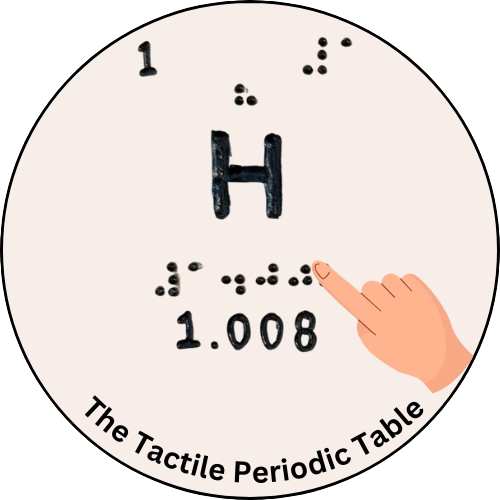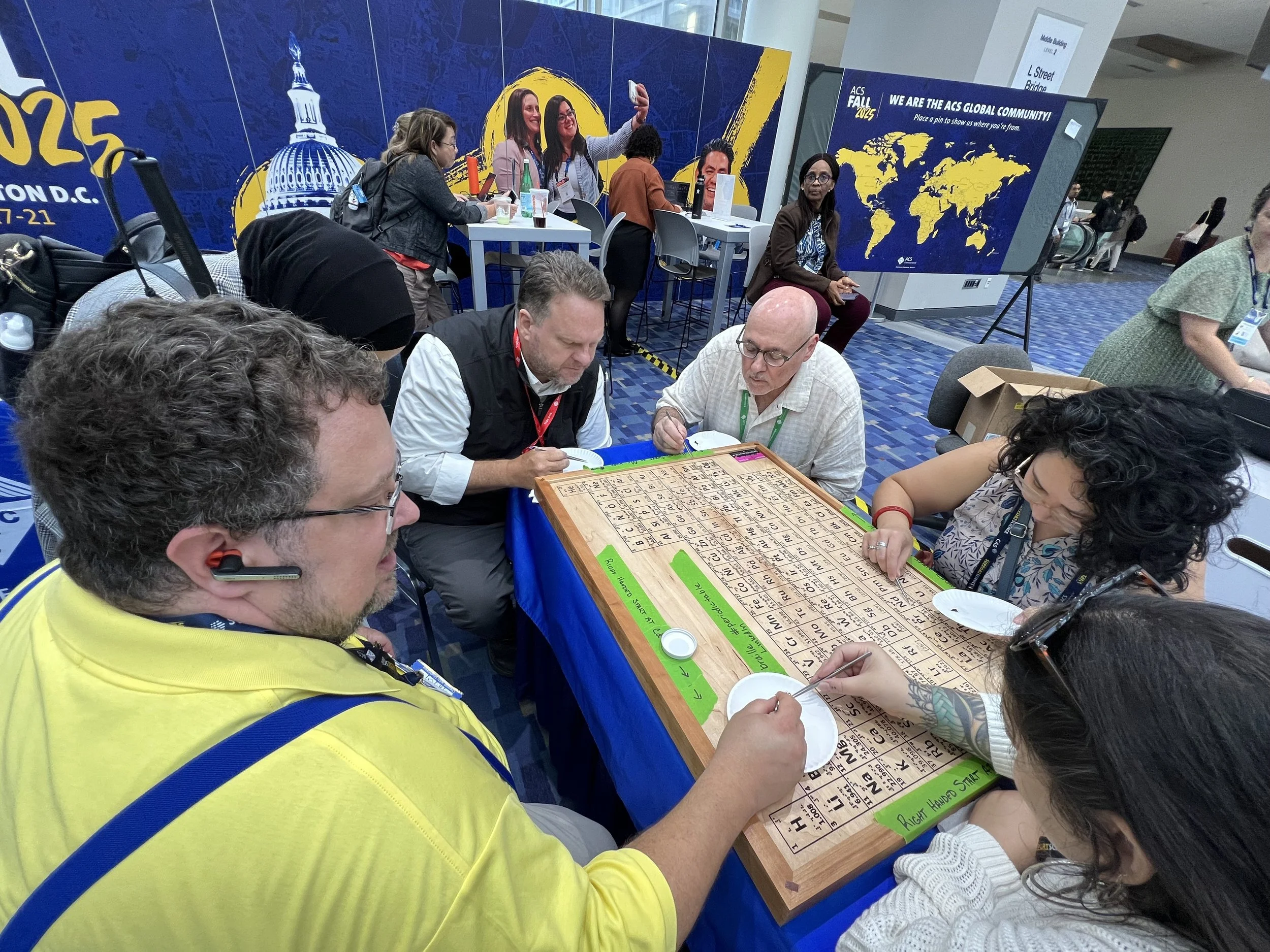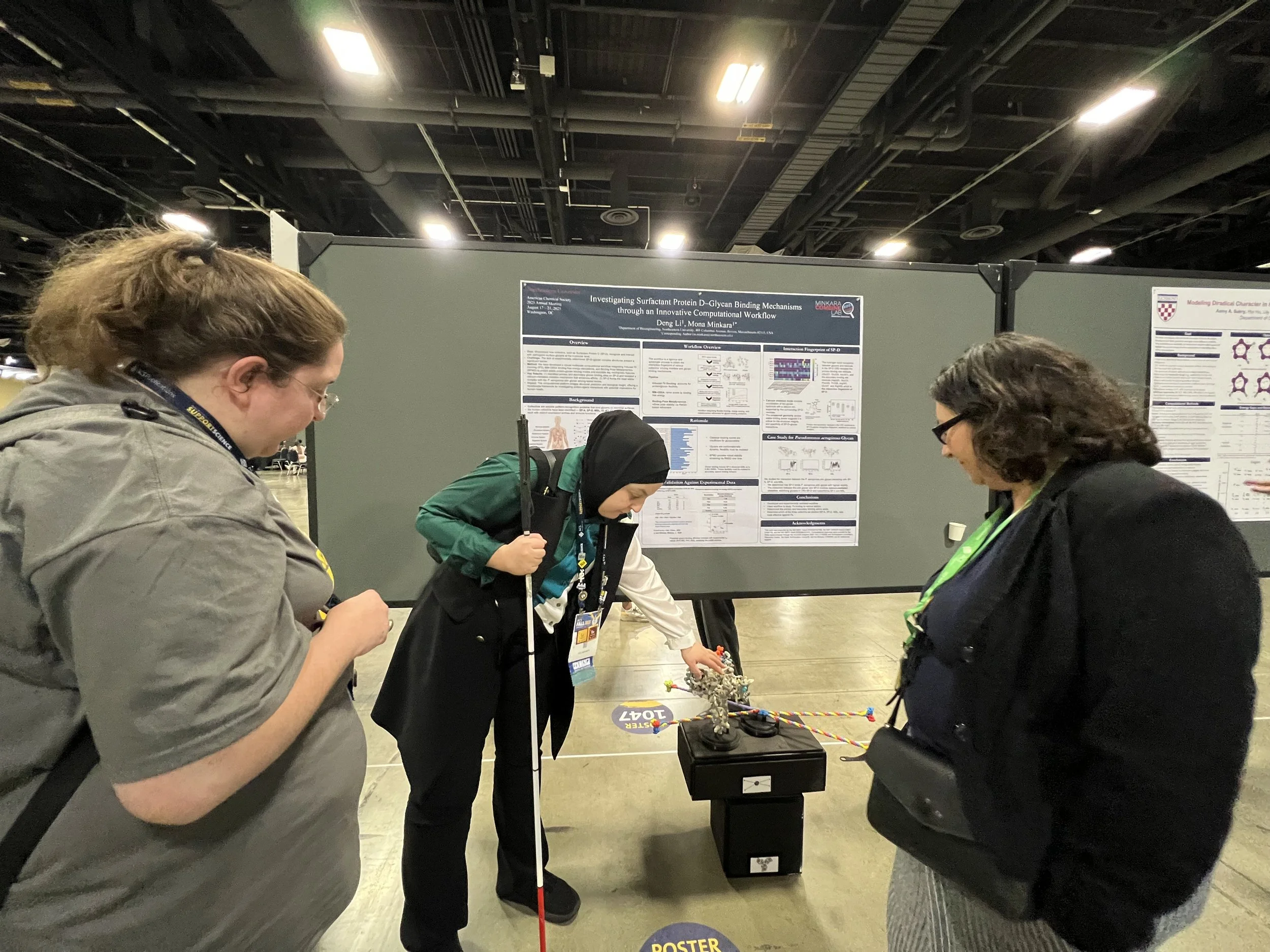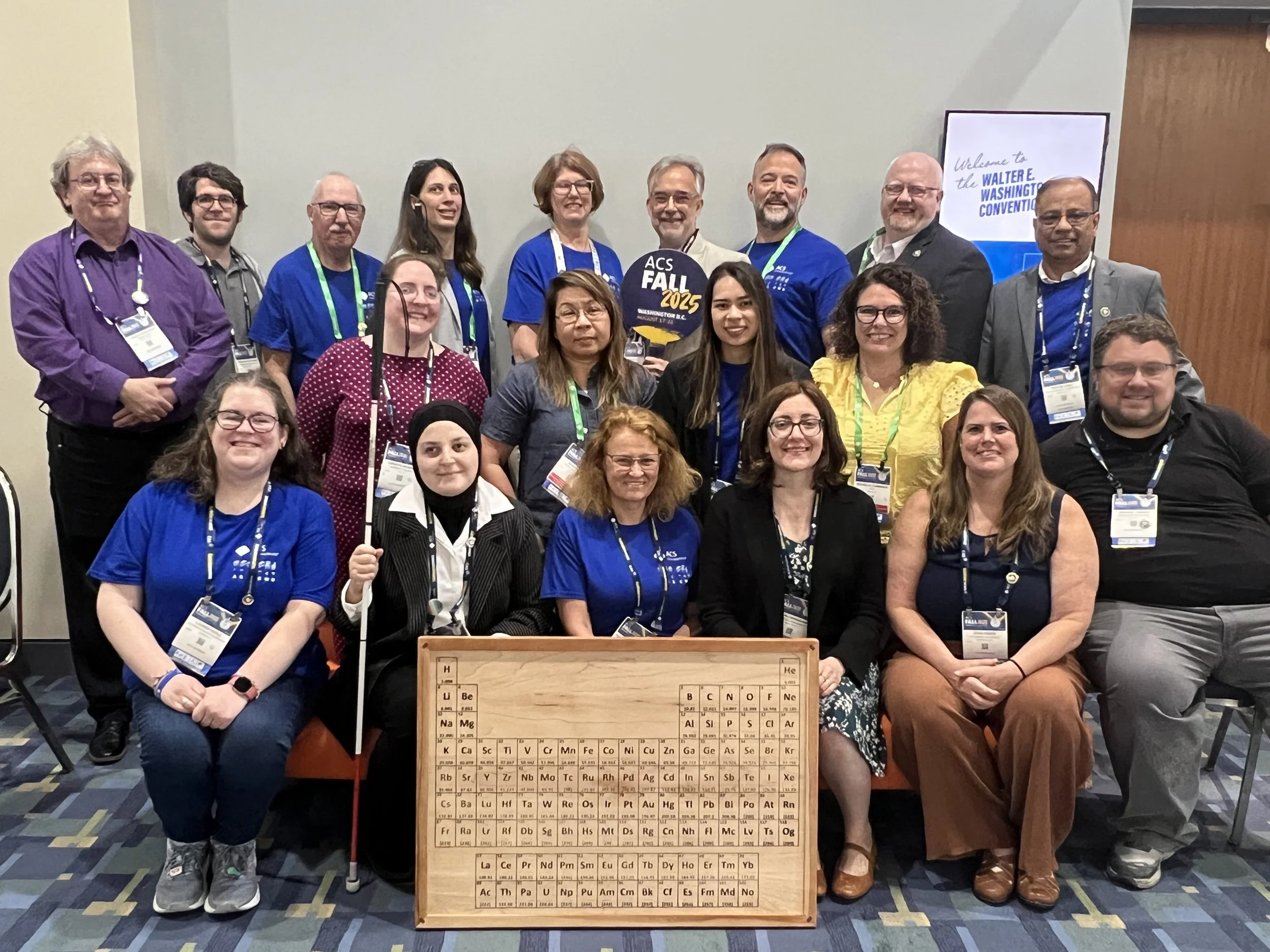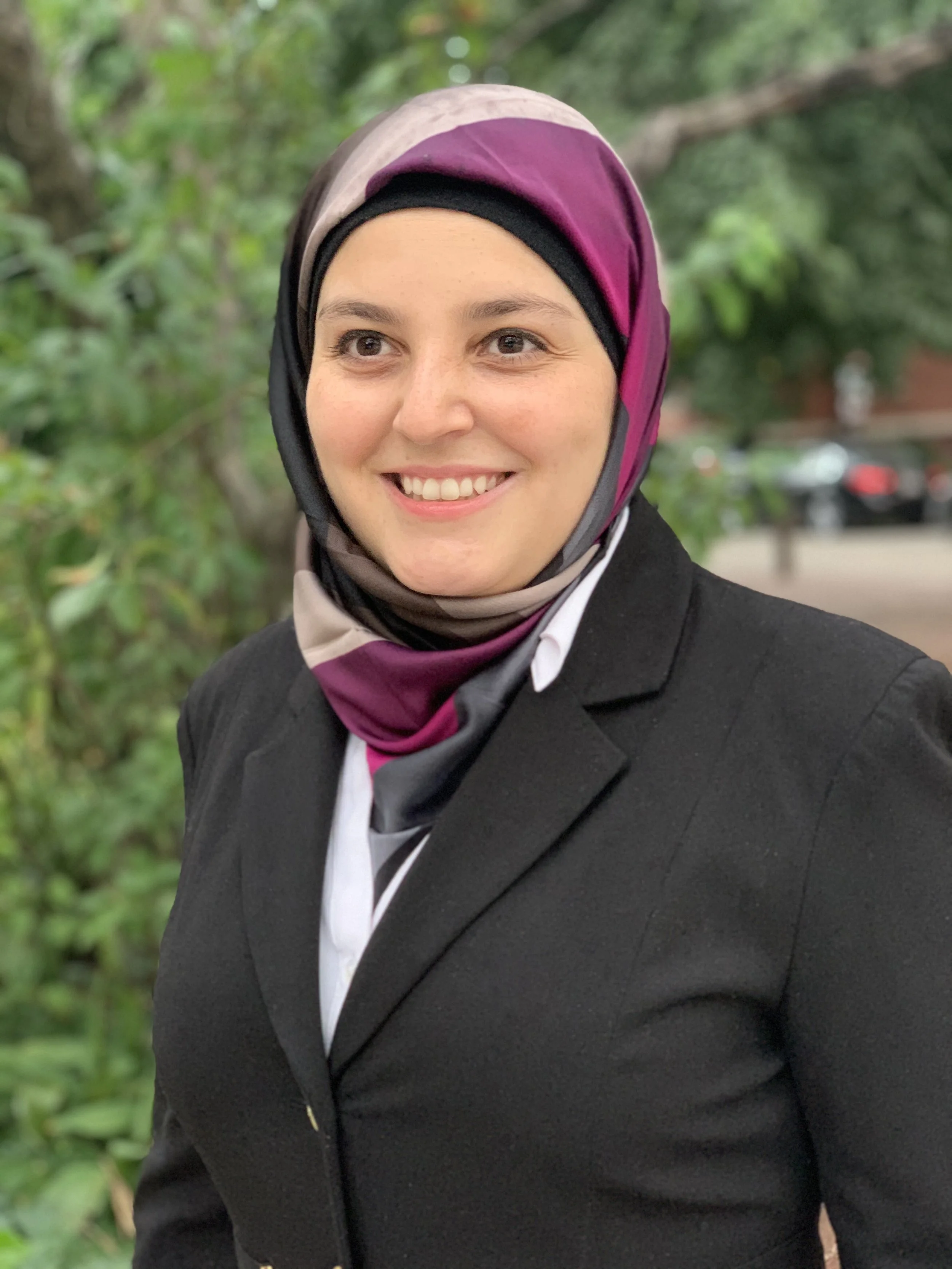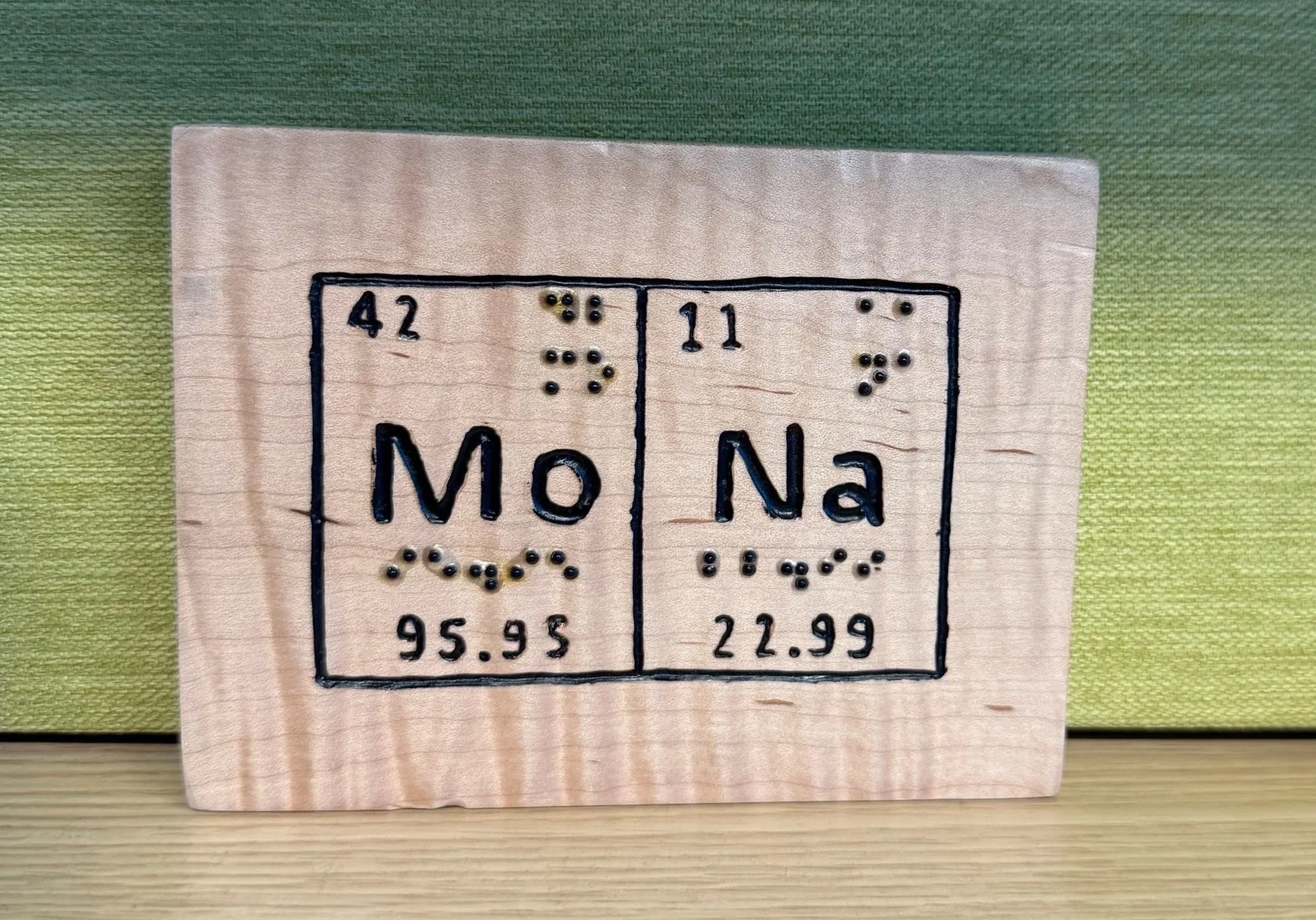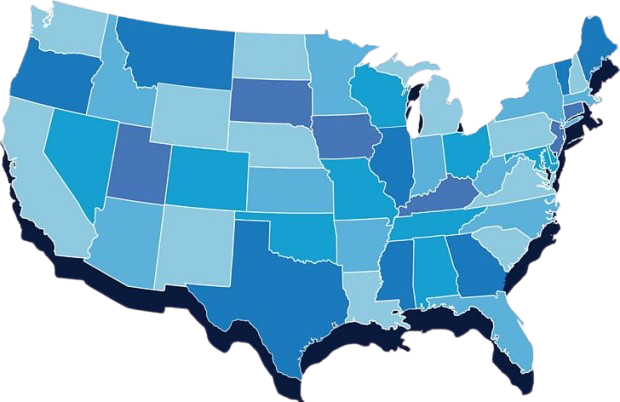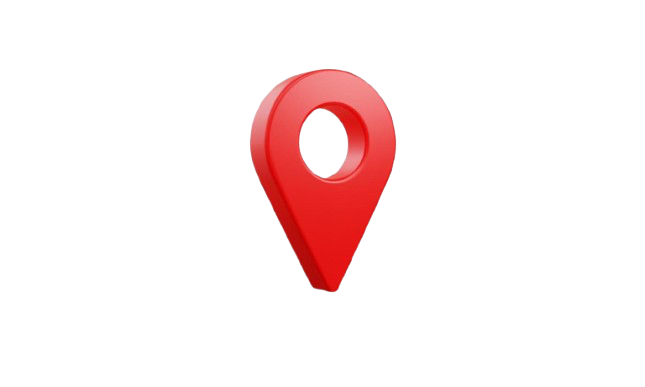“The Tactile Periodic Table”
By Michael Fricke
The Craft of Accessibility
Michael Fricke, Ph.D
He is the Chief Scientific Officer and partner in an environmental lead laboratory start-up called Cleveland Analytical LLC. Prior to starting this lab, Fricke worked in analytical development in the pharmaceutical industry and was the analytical lead for Molnupiravir, the first approved oral treatment for COVID-19. His graduate and post-doctoral research was devoted to the study of arsenic. This work culminated in the discovery, successful synthesis and then isolation of dimethylthioarsinic acid (DMTA). DMTA has since been identified as the most cytotoxic metabolite of arsenic in humans and may prove critical to understanding the toxic effects associated with low-level chronic arsenic exposure. Dr Fricke is a Councilor for the Akron Section of the American Chemical Society and member of the ACS Committee for Chemists with Disabilities (CWD). Fricke combined his woodworking passion and collaboration with fellow committee member Mona Minkara to create the Tactile Periodic Table Project. This project received the 2025 ACS Presidential Spark Grant and has expanded with a goal of 50 Tactile Periodic Tables in 50 states by the 50th anniversary of CWD in 2030.
Gallery
“Where others see symbols, I feel structures — and both paths lead to the same truth
”
“Tactile science empowers blind individuals to be creators of knowledge, not just consumers.”
“Tactile learning turns barriers in science into bridges.”
The tactile periodic table has since traveled to many places, sparking conversations about inclusion in science. Today, it has found its permanent home at Northeastern University in Boston, Massachusetts.
“Accessibility is not an accommodation; it is a driver of innovation.”
Origin Story of the Tactile Periodic Table
A collaboration between woodworking and chemistry turned into a project that made science more accessible.
Mona Samer Minkara, Ph.D., is an Assistant Professor of Bioengineering at Northeastern University. A blind scientist driven by curiosity and resilience, she uses computer simulations to study chemical interactions in the lungs, with the goal of advancing drug delivery and treatment. Born to Lebanese immigrant parents and diagnosed with macular degeneration at age seven, Mona defied expectations and pursued her passion for science, earning her Ph.D. in Chemistry from the University of Florida and completing postdoctoral research at the University of Minnesota. Today, through her teaching, research, and advocacy, she is committed to making science more inclusive and accessible for future generations.
How it Began
The idea for the tactile periodic table began during a Chemists with Disabilities Committee meeting. In conversation with my colleague, Friki, we started discussing his passion for woodworking. Out of that exchange came a simple but powerful idea: What if we created a wooden periodic table that was tactically accessible for the blind?
The First Carving
After experimenting with small wooden element blocks, Friki’s first gift was carving my name—Mona—using the elements Molybdenum (Mo) and Sodium (Na). It was a thoughtful and symbolic gesture that set the tone for the project.
Finding a Home
From there, the iterations continued, each version improving on the last. Eventually, Friki crafted a complete tactile periodic table—both a work of art and accessibility..
Locations of Impact
The Tactile Periodic Table is beginning its journey in Boston at Northeastern University, where the first prototype has been introduced. As we continue to collaborate with educators, researchers, and institutions, more locations will be added to the map—expanding access and impact across the country.

